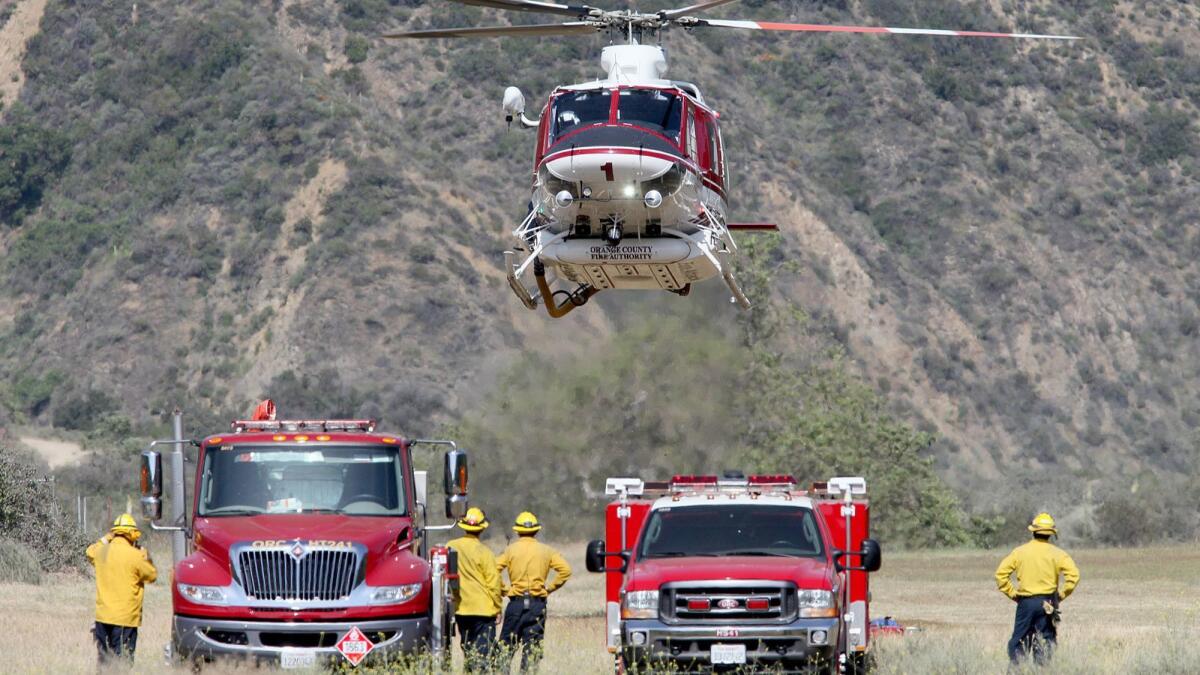OCFA Chief orders decryption of firefighter radios

The Orange County Fire Authority has reversed its decision to encrypt its radio and dispatch communications that was initiated Monday. The encryption was part of the county’s upgrade of its 800 MHz Countywide-Coordinated Communications System, managed by the Orange County Sheriff’s Department.
Officials said the move was meant to improve public safety agencies’ ability to communicate with each other during an emergency, but because it blocks the public from tuning into its communications during disasters, the OCFA decided to reverse the encryption of more than 1,500 radios used by its firefighters and paramedics.
OCFA Chief Brian Fennessy revisited the decision Thursday during a meeting of the Orange County Fire Chiefs Assn., stating that the public’s ability to stay informed during emergencies trumped concerns about operational security. It will take about 30 to 60 days to reprogram all of the radios.
The temporary encryption riled those who listen to radio scanners, including journalists who depend on communications to follow public safety agencies’ operations.
Police departments say they’ve shifted to encrypted channels to protect officers; their critics say it’s a tool to conceal their activities from the public.
“The decision to encrypt was made for safety reasons after an active shooter incident,” Fennessy wrote in a statement. “My decision today provides for safety of firefighters and the public.”
The about-face decision comes as state officials announce that this year’s fire season is expected to be the most destructive in California history.
Orange County firefighters will still have the ability on a case-by-case basis to switch to encrypted channels to securely communicate with police and sheriff’s deputies during a SWAT operation or bomb threat, OCFA spokeswoman Colleen Windsor said.
The Orange County Fire Chiefs Assn. made the decision to encrypt radios several years ago before many of the current fire chiefs were hired, Windsor said.
OCFA budgeted $7.54 million in the 2016-2017 fiscal year to purchase and install 1,555 portable, mobile, and base station radios. The agency budgeted another $3.53 million in fiscal year 2018-19 to update 18 dispatch consoles in its Emergency Command Center. Last week, the Fire Authority finished installing the last of the new encrypted radios.
Dave Toussaint, a retired Cal Fire firefighter and freelance photographer, listens to scanners almost every day and tweets about emergencies, especially wildfires in California. After 32 years in the fire service, the Riverside resident recognizes the value that scanners provide in providing timely information about scenarios when public information officers often need to wait for approval from department leaders.
“I honestly believe nothing that a fire department does needs to be encrypted at all,” Toussaint said. “The last thing they need to do is hide behind encryption. The first thing people think is what are you hiding.”
The Fire Authority denies that secrecy had anything to do with the initial decision to encrypt its radios.
“Nothing could be further from the truth,” Windsor said. “We push out information on incidents on our home page. We want people to be informed. This is in no way to quash any kind of information.”
Scanner listeners provide a valuable service to the public because, as independent news gatherers, they’re not handcuffed by the procedures that can delay information from getting to people in danger, Toussaint said.
For example, Toussaint was listening to online scanners from Butte County in the early minutes of the Camp Fire. He immediately started posting about the fire’s progress toward the town of Paradise and that residents needed to get out.
“In the Camp Fire, they didn’t send out a text until two and a half hours into the incident,” Toussaint said. “It was already well into Paradise by that part.”
Support our coverage by becoming a digital subscriber.
Daniel Langhorne is a contributor to TimesOC. Follow him on Twitter at @DanielLanghorne.
For more news and features about Orange County, visit TimesOC.com or follow us on Twitter @timesocofficial.
All the latest on Orange County from Orange County.
Get our free TimesOC newsletter.
You may occasionally receive promotional content from the Daily Pilot.




